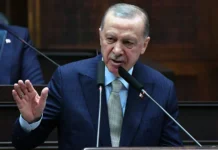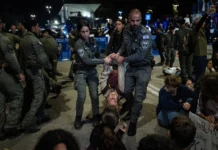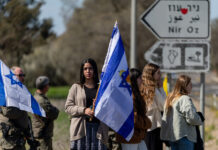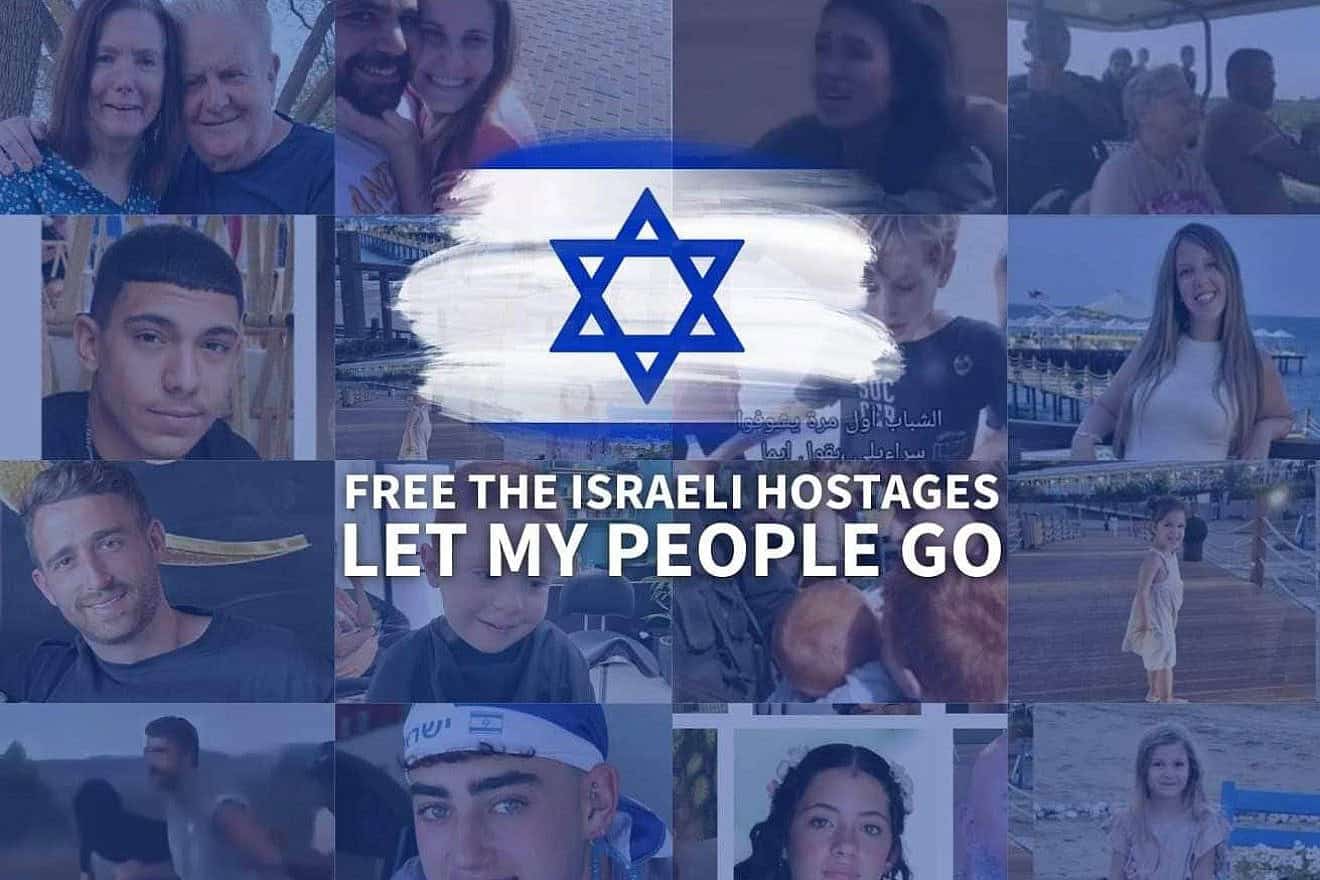As hostages are being released in a slow and painful process, the captives and their families are suffering devastating psychological effects, now 500 days since the brutal Oct. 7 massacre. The families of hostages still held by Hamas and Palestinian Islamic Jihad in Gaza have been tormented each week as they wait to find out if their children, partners and parents will be released—or are even alive.
Each week increases the likelihood that these families will receive their kidnapped family member in a coffin.
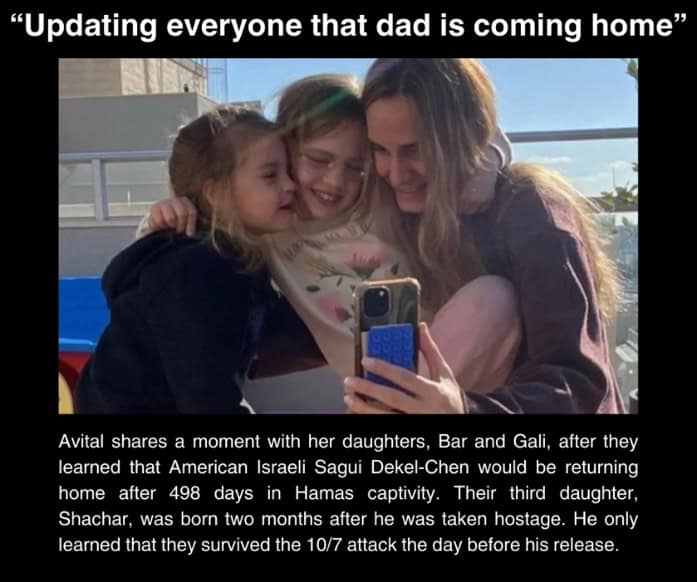
The world recently learned that the red-headed children of the Bibas family and their mother—iconic symbols of the hostages throughout the war—died in Hamas captivity. Their husband and father, recently released hostage Yarden Bibas, had been clinging to hope that his wife and two young children would be returned alive.
The Iran-backed terrorist organizations released Russian-Israeli Sasha Troufanov, Argentinian-Israeli Yair Horn and American-Israeli Sagui Dekel-Chen on Feb. 15. It was heart-warming news for their families but also heart-breaking for the families of hostages yet to be released in Phase 1 of the ceasefire deal.
Each hostage release “ceremony” is choreographed. The hostages are paraded on stage with signed “certificates” to “commemorate” their time trapped in tunnels and other locations. The three emaciated hostages released one week prior looked similar to Holocaust survivors.
Survivor testimonies: ‘Piles of bodies, cries of rape’
“You grow up on stories from the Holocaust and the images of these emaciated bodies,” recalled Avihai Brodutch, whose wife and three children—ages 4, 9 and 10—were held in Hamas captivity for 51 days in 2023. “And now your family has gone through this.” Avihai was wounded but escaped from his kidnappers on Oct. 7. The Wall Street Journal recently profiled several of the hostages released in a November 2023 ceasefire deal and their long, wrenching recoveries.
Avihai’s father recounts that “so many people died around him. They saw bodies everywhere and houses in flames. A lot of my friends and neighbors who we knew well had their families killed. So it’s a part of our life now: death.”
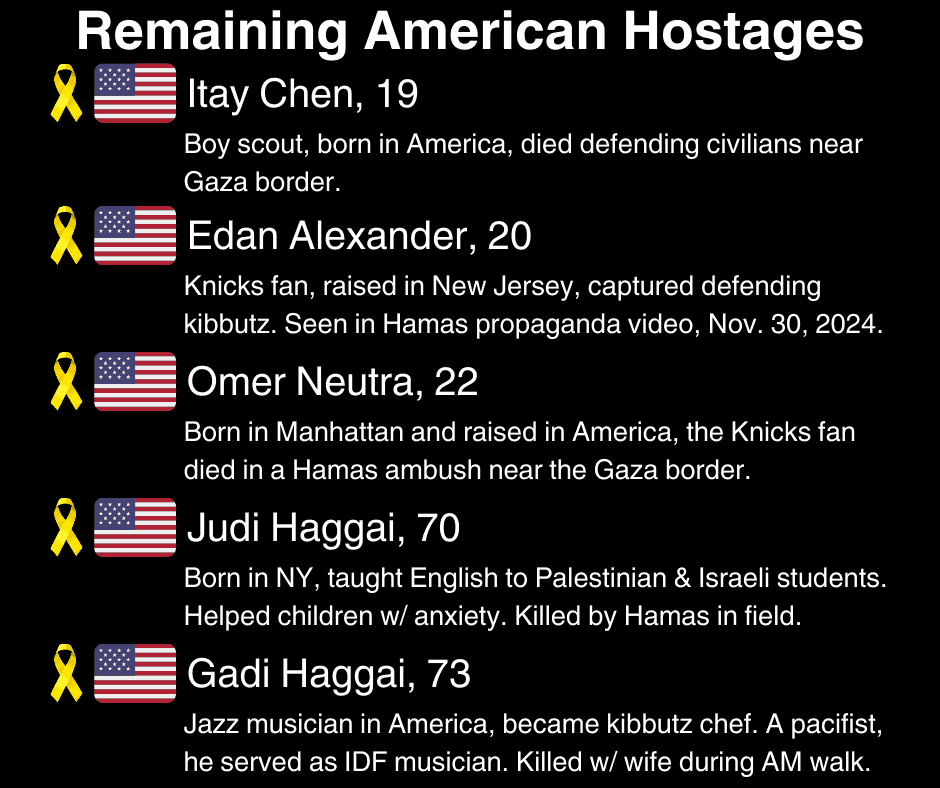
Mia Schem, 22, was one of the first faces of the kidnapped Israelis: “The feelings of Gaza won’t go away. People think you are out, you are safe, and that it’s over. But it’s not. Every day is a battle. My body is still tense.”
She developed epilepsy—recurrent seizures—after spending 50 days in captivity. A Hamas terrorist shot her right arm at point-blank range, destroying her elbow. That arm is a few inches shorter after multiple surgeries. Mia recalled hearing the cries of women at the Nova music festival, where she also saw piles of dead bodies.
Luis Har, 71, was abducted from his kibbutz: “We were punished for crying, punished for laughing, punished for missing your parents. They wanted you to be a robot, to act according to their needs. One time I cried, and I was beaten up for it.”
An Israeli psychotherapist described how the released child hostages are struggling with guilt. One told her mother: “You know, Mommy, we were caught because I was crying.”
Recent survivor statements: ‘Forced to fake her own death’
The recently released hostages were held for nearly 500 days, suffering from excruciating torture, psychological torment and debilitating injuries. Hamas forced Daniella Gilboa to stage her own death during captivity to make it look like Israeli forces killed her in an airstrike. Her mother, Orly, described the nightmare: “One of the terrorists came to her with a camera and told her, ‘Daniella, I must take a picture of you, like you are dead.’ She started to cry, begging him not to do it. When she saw me and my husband for the first time after her release, she apologized for how she caused us to feel this whole time.”
Merav Leshem Gonen spoke for her daughter: “Romi’s right hand is paralyzed and nonfunctional from her untreated gunshot wound. Romi is still in pain today. For a year and three months, my daughter suffered excruciating pain. She was given no painkillers, no medication—nothing.”
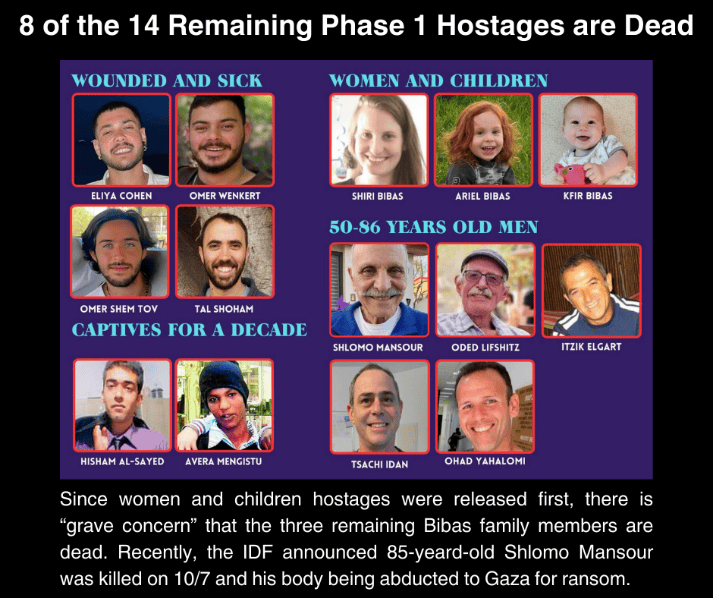
Multiple hostages were held in the homes of terrorists or civilians. They were forced to cook, even while being starved, and to care for children. The men still being held were described as being in dire straits: One had been shackled by his legs the entire time, another lost consciousness from being beaten; other hostages thought that he was dead. Female hostages were starved, beaten, forced to eat donkey food and still cannot bring themselves to talk about horrors endured on Oct. 7. The silver lining is that released hostages reported seeing many of them alive—the first signs of life for their families since their abductions.
American-Israeli Keith Siegel: “I am a survivor. I lived in constant fear. I was starved and I was tortured, both physically and emotionally.” Two weeks after his release, former hostage Ofer Calderon has been hospitalized with pneumonia.
Resilience: ‘I chose the path of faith’
Despite torture, malnourishment and not even being allowed to see the sky, many of the recently released hostages remained resilient. They did not know if they would survive or if their families survived. Freed hostage Amit Soussana credited Liri Albag with saving her life in captivity by convincing the terrorists that she was not a soldier. All the hostages did their best to live day by day in captivity.
Gadi Moses, 80, focused on the day he would return home to rebuild his community: “I never broke, I never cried. I just waited for the moment I would be free.” He held imaginary conversations with loved ones, took daily walks in his cell counting floor tiles to measure the distance and solved math puzzles in his head.
Some hostages turned to their faith or became more religious in captivity. Agam Berger: “I chose the path of faith. We didn’t eat bread on Passover and tried to fast on Yom Kippur. With the path of faith, I have returned—thank you to all the people of Israel and our heroic IDF soldiers. There is no one like you in the world!” Agam was released one week after her friends: “Agam braided our hair before we left. It felt like she was giving us a piece of her strength to carry with us.”
Daniella Gilboa, one of the hostages, was able to see some televised coverage of thousands of Israelis rallying for their release: “Daniella saw what was happening here. She knew we were fighting for her.” The enduring image of Naama Levy being pushed into a vehicle in blood-soaked gray sweatpants was played again and again: “While I was still in captivity, I saw how you were fighting for me. Thank you, everyone, I love you!” Daniella’s boyfriend, Roi, proposed to her after her release.
Hostage David Cunio was recently seen alive in Gaza—his first sign of life. His wife Aloni says, “This gives us so much strength and so much air to breathe. There is no way to describe how much happiness I’ve been feeling from the moment that we heard the news. It gives us renewed strength to fight until he is returned, until everybody is returned.”
Additional hostage headlines
- Israel released 369 Palestinian prisoners, including 36 serving life terms for terror; P.A. leader pays released terrorists special “release grants”; Palestinian teen, 13 at time of attack, jailed for 18 years for 2023 killing of Bedouin Border Police officer
- Social-media influencer in Gaza given access by Hamas to three hostages before their release on Feb. 8
- An analysis of coverage by The New York Times coverage of the war between Israel and Hamas; Media coverage of most recent hostage release; The New York Times: “Hamas toned down theatrics” because it “did not make hostages thank their captors”
- Qatar’s Al Jazeera coordinated with Hamas to spread Oct. 7 misinformation, creating a false narrative about Israel
Points to consider:
- Hamas terrorists tortured hostages physically and psychologically.
Iranian-backed Hamas subjected hostages to inhumane treatment, including beatings, starvation and psychological terror. Many were subjected to sexual violence, denied medical care and confined in complete darkness in tunnels for months. Hamas deliberately inflicted suffering to break their victims while using them as bargaining chips to secure the release of terrorists and allow them to retain control of Gaza. Survivors described relentless abuse and fear, demonstrating the terror group’s extreme disregard for human dignity.
- Released hostages and their families are displaying remarkable resilience.
Many hostages displayed extraordinary resilience during captivity and have bravely shared their painful experiences—powerful testimonies of the crimes committed by Hamas terrorists. Hostage families continue to advocate for those still held captive, refusing to let their loved ones be forgotten. The Israeli people, along with supporters around the world, have rallied behind them, offering strength and solidarity. Their courage in the face of terror is a powerful reminder of the human spirit’s ability to endure and fight back.
- The world must remember the savagery of the Hamas atrocities.
The brutality was staggering. Entire families were slaughtered, children burned alive, women raped and civilians executed in their homes. The worst attack on Jews since the Holocaust was not an act of war but a series of deliberate, sadistic atrocities meant to instill terror. Hamas filmed its crimes and boasted about its cruelty. Yet many individuals, organizations and governments still seek to downplay or justify its actions. The world must not let these horrors fade from memory. A failure to hold Hamas accountable only invites further violence and emboldens those who seek to destroy Israel and Jewish communities around the world.
4. Comparing kidnapped Israeli hostages to convicted Palestinian murderers is a false moral equivalence.
Many anti-Israel activists, non-governmental organizations and journalists promote a fallacy. Hamas kidnapped innocent civilians, including babies, the elderly and entire families, dragging them into captivity as a tool for extortion and terrorist propaganda. They have been exchanged for dozens of Palestinian prisoners convicted of mass murder and terrorism. They were granted due process, unlike the Israeli hostages who were snatched from their homes. Any attempt to compare these groups erases the reality of Hamas war crimes and distorts the truth about the suffering of innocent Israeli hostages.
5. Israel is determined to prevent the Hamas goal of repeating Oct. 7 “again, again and again.”
Senior Hamas leader Osama Hamdan recently spoke at an Al Jazeera event: “Oct. 7 was a historic success and victory. There is an opportunity to defeat Israel if there is a readiness for such a battle.” Israel cannot allow this threat to materialize. The Jewish state has a moral obligation to protect its citizens by dismantling Hamas. This is not just about Israel’s security; it is about preventing another genocide against the Jewish people. When Iran, which is pursuing nuclear weapons, and its proxy Hamas repeatedly state their intentions, we should believe them. While Israel may be making deals with the devil now to rescue its citizens, it is also clear that there can never be any deal that allows Hamas to remain in power.




